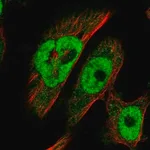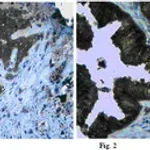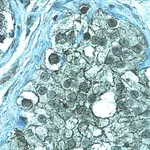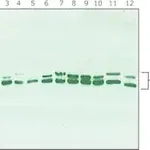
✨AI 추천 연관 상품
AI가 분석한 이 상품과 연관된 추천 상품들을 확인해보세요
연관 상품을 찾고 있습니다...
Anti-ZO-1 Antibody
from rabbit, purified by affinity chromatography
tight junction protein 1, zonula occludens 1 protein, Zona occludens protein 1, Zonula occludens protein 1, zona occludens 1
Tight junctions are complexes of proteins that create intercellular boundaries between the plasma membrane domains of epithelial and endothelial cells. Many of the tight junction-associated proteins are members of the membrane associated guanylate kinase (MAGUK) family and include occludin and zona occludin family members ZO-1, ZO-2 and ZO-3. These proteins are thought to have both structural and signaling roles, and are characteristically defined by three protein-protein interaction modules: the PDZ domain, the SH3 domain and the guanylate kinase (GuK) domain. ZO-1 forms complexes with either ZO-2 or ZO-3. In addition, these proteins can also associate with claudin, occludin and F-actin, at tight junction stands, where they provide a linkage between the actin cytoskeleton and the tight junction. ZO-1 expression is significantly reduced in many breast cancer lines. ZO-2 and ZO-3 are ubiquitously expressed within epithelial tight junctions, and unlike ZO-1, which is also expressed at cell junctions of cardiac myocytes, ZO-2 is not expressed in nonepithelial tissue.
🏷️Merck Sigma 상품 둘러보기
동일 브랜드의 다른 상품들을 확인해보세요

Merck Sigma
Merck Anti-BRCA2 antibody produced in rabbit
370,530원

Merck Sigma
Merck Anti-Claudin-5 Antibody
205,900원

Merck Sigma
Merck Anti-ZO-1 Antibody
636,300원

Merck Sigma
Merck Anti-MAP Kinase (ERK-1, ERK-2) antibody produced in rabbit
269,000원

Merck Sigma
Merck Anti-Glutamate Receptor NMDAR1 (NR1) antibody produced in rabbit
269,000원
배송/결제/교환/반품 안내
배송 정보
| 기본 배송비 |
| 교환/반품 배송비 |
|
|---|---|---|---|
| 착불 배송비 |
| ||
| 교환/반품 배송비 |
| ||
결제 및 환불 안내
| 결제수단 |
|
|---|---|
| 취소 |
|
| 반품 |
|
| 환급 |
|
교환 및 반품 접수
| 교환 및 반품 접수 기한 |
|
|---|---|
| 교환 및 반품 접수가 가능한 경우 |
|
| 교환 및 반품 접수가 불가능한 경우 |
|
교환 및 반품 신청
| 교환 절차 |
|
|---|---|
| 반품 절차 |
|
